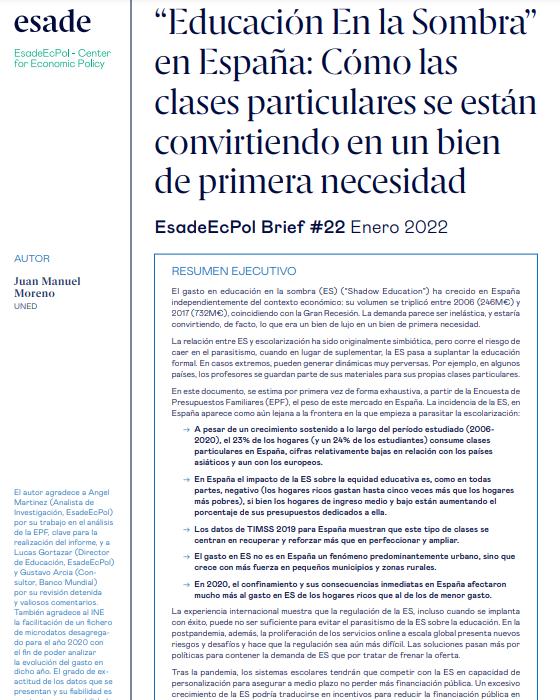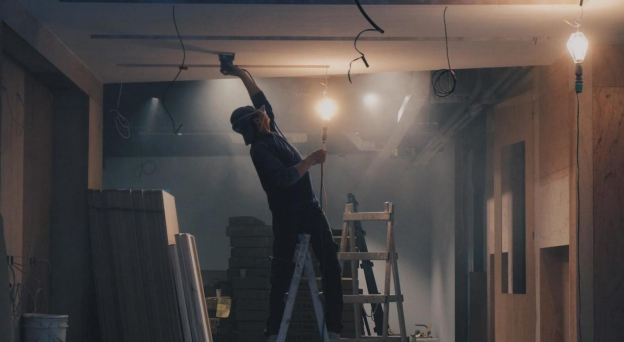They call it shadow education. They are private private classes to which families attend to reinforce the knowledge of their school-age children. Against all odds, the Great Recession that shook family economies between 2008 and 2015 did not affect the payment of these services, quite the contrary. In 2017, this expense had tripled in Spain to reach 732 million euros (there were 246 in 2006). This investment was not only produced by the wealthiest families, but also grew among the middle and lower class, which did reduce their spending on food, clothing and restaurants. Carmen, mother of two children and shop assistant, was one of them. “The most important thing for me is the future of my children, I want them to go far and we all know that for that they have to spend extra hours outside of school,” she says. They want their children to be competitive in an increasingly demanding job market.
These data, extracted from the report Education in the shadows in Spain: how private classes are becoming a basic necessity, published this Thursday by the EsadeEcPol think tank and prepared from the Family Budget Survey of the National Institute of Statistics (INE), are "worrying" because they can aggravate educational and social inequalities between families who can pay more and less. “Governors have to put in place far-reaching policies to respond to this increasing search for non-formal education, families have very high expectations and see training as key for social lift, they spend whatever is necessary,” he points out. Juan Manuel Moreno, author of the study and former educational adviser to the World Bank. In his opinion, the fact that many high school students stop going to class the weeks prior to Selectividad to be prepared in private academies can undermine the quality of teaching and the confidence of families in the system in the medium term educational.
In 2019, households with the largest budgets (those in the top 20% of spenders) spent five times more on private lessons than households with the least resources. The wealthiest families spent 1,023 euros on average compared to the 550 that the poorest spent for this purpose. In Spain, 24% of primary school students follow private math and science sessions, according to the 2019 TIMSS report, prepared by the International Association for the Evaluation of Educational Achievement (IEA).
That same document ―which measures the skills in mathematics and science of 4th grade students (10-year-olds) in 64 countries―, indicates that according to the responses of students in that educational stage in Spain, they attend private classes to “recover and reinforce” content more than to “improve” and “expand”. An aspect that can be radically opposite in Secondary, when the demand is greater and they are about to enter the University. "There is an increasingly widespread awareness in all social classes that investing in private classes ensures access to future opportunities for children," says Juan Manuel Moreno, who currently teaches at UNED.

Another factor that influences is the fact that the number of children is decreasing and that allows to invest more in each one of them. "Parents have less time to help them with homework and it becomes necessary to spend on support classes," he adds. The Family Budget Survey, on which the Esade study is based, does not provide data on whether the purpose of households is more related to recovery for those furthest behind or to enrichment for the most outstanding.
Jhessica, thank you for putting a sparkle in my eyes. That's the best part of anyone. {:^) https://t.co/sR8Hht462d
— Jim Carrey Fri Jul 23 01:33:00 +0000 2021
Sara Sanz, early childhood education monitor and mother of three children, pays about 100 euros a month for private English classes for two of her children (aged nine and eleven). “It is an important economic effort, but we are clear that we are doing it so that they have more job opportunities in the future, I want them to learn English and at school the teachers are saturated and go as far as they can”. In her case, she has not had to pay for classes in other subjects because she is getting good grades and the level at the center “is good”.
Esteban Álvarez, president of the Association of Directors of Institutes of Madrid ―which brings together 85% of directors of institutes in the region― is not surprised by this growth. “The Government budget for Education began to decline with the 2007 crisis and little by little conditions in the classroom worsened, more students per teacher. At the same time, the curriculum continued to be and is very rigid and encyclopedic and families seek more personalized attention that they do not find in educational centers, seek to cover the shortcomings of an increasingly competitive system where one tenth more in Selectivity can give you access to the career you want”.
Dolores, a 44-year-old unemployed woman, feels helpless for not being able to pay for private lessons for any of her four children. The salary of her husband, a taxi driver, is not enough. "The impotence generated by not having money and not being able to give your children what you think they need is very painful, a brutal inequality is produced," she says. Her children have attended some courses in the PROA program (Programs for Reinforcement, Orientation and Support), financed by the Ministry of Education and the autonomies for students with more academic difficulties and less economic resources. "The PROA has limited places, not everyone who needs it can enter, it is the centers that decide who are the most needy students."
According to a survey by the Go Student training company in 2021, the main reason for investing in private classes in Spain is the "difficulty of children with certain subjects", especially with Mathematics: they account for 65% of the sessions hired. "In our country, the function of remedying and recovering still weighs more than that of expanding and perfecting, which in turn implies that we are in a less advanced stage than that seen in many Asian and European countries," Moreno points out. Some 80% of Korean primary school students and 90% of Japanese primary school students take private lessons.
It is a global phenomenon and according to ReportLinker - a laboratory of ideas that monitors the "global industry of private tutoring" - these services will reach a volume of 218,000 million dollars worldwide in 2027 (approximately the Gross Domestic Product of Portugal in 2020). In the United Kingdom, it has gone from 18% of students aged 11 to 16 in 2005 to 27% in 2019, with London bordering on 41%. In Germany, it has gone from 27% in the 2000s to more than 40% in 2013, according to the EsadeEcPol report.
You can follow EL PAÍS EDUCACIÓN on Facebook and Twitter, or sign up here to receive our weekly newsletter.




